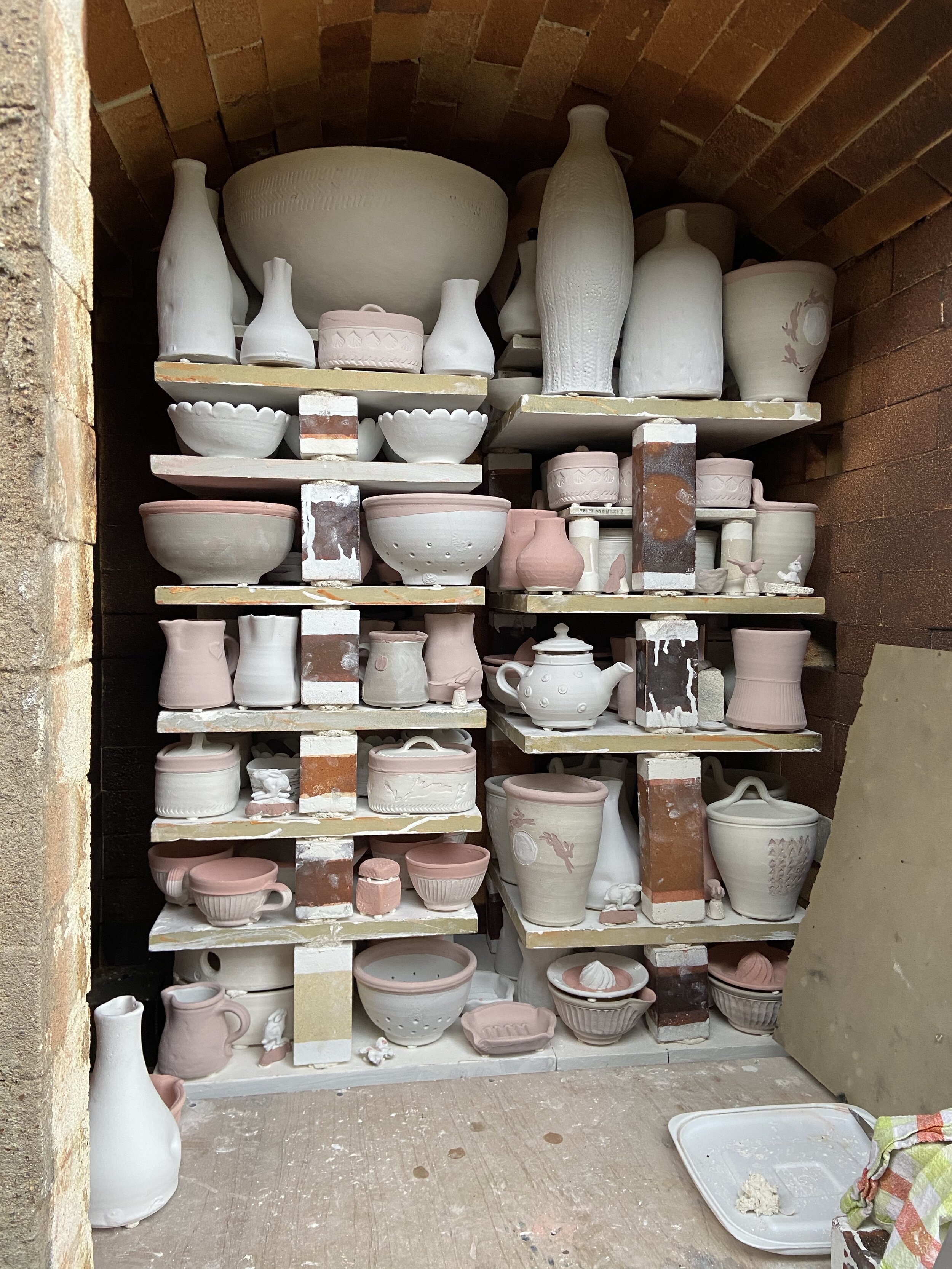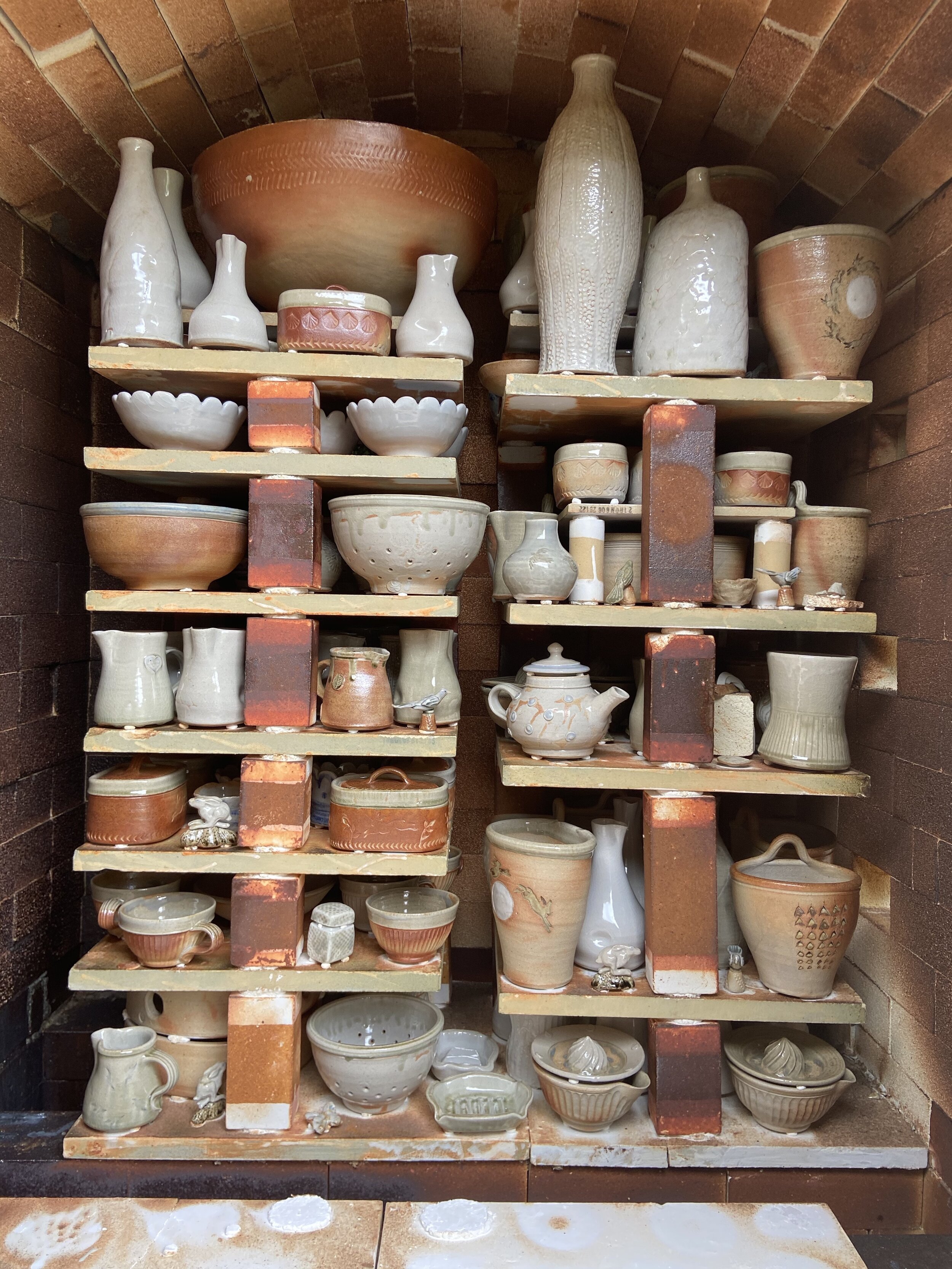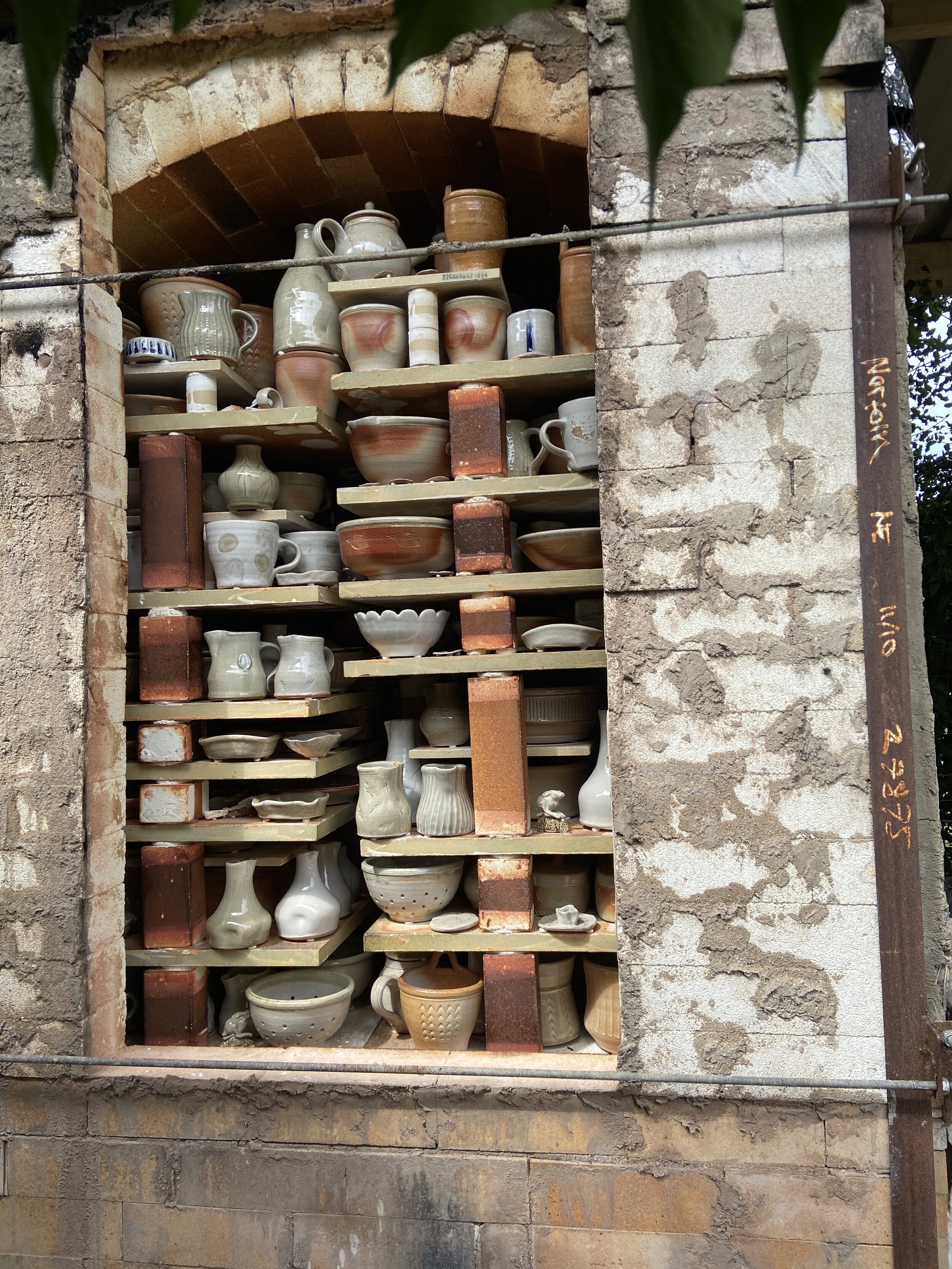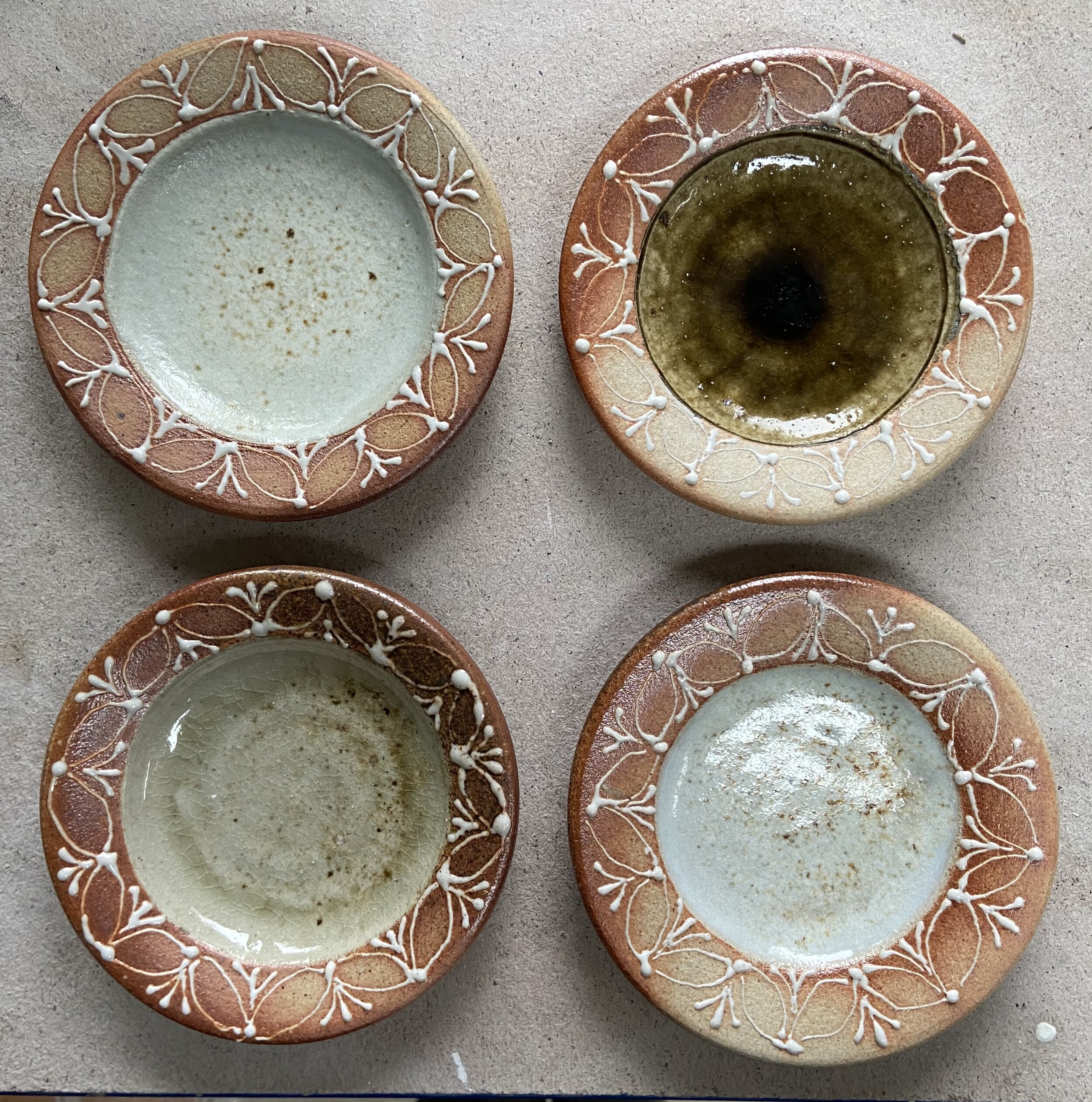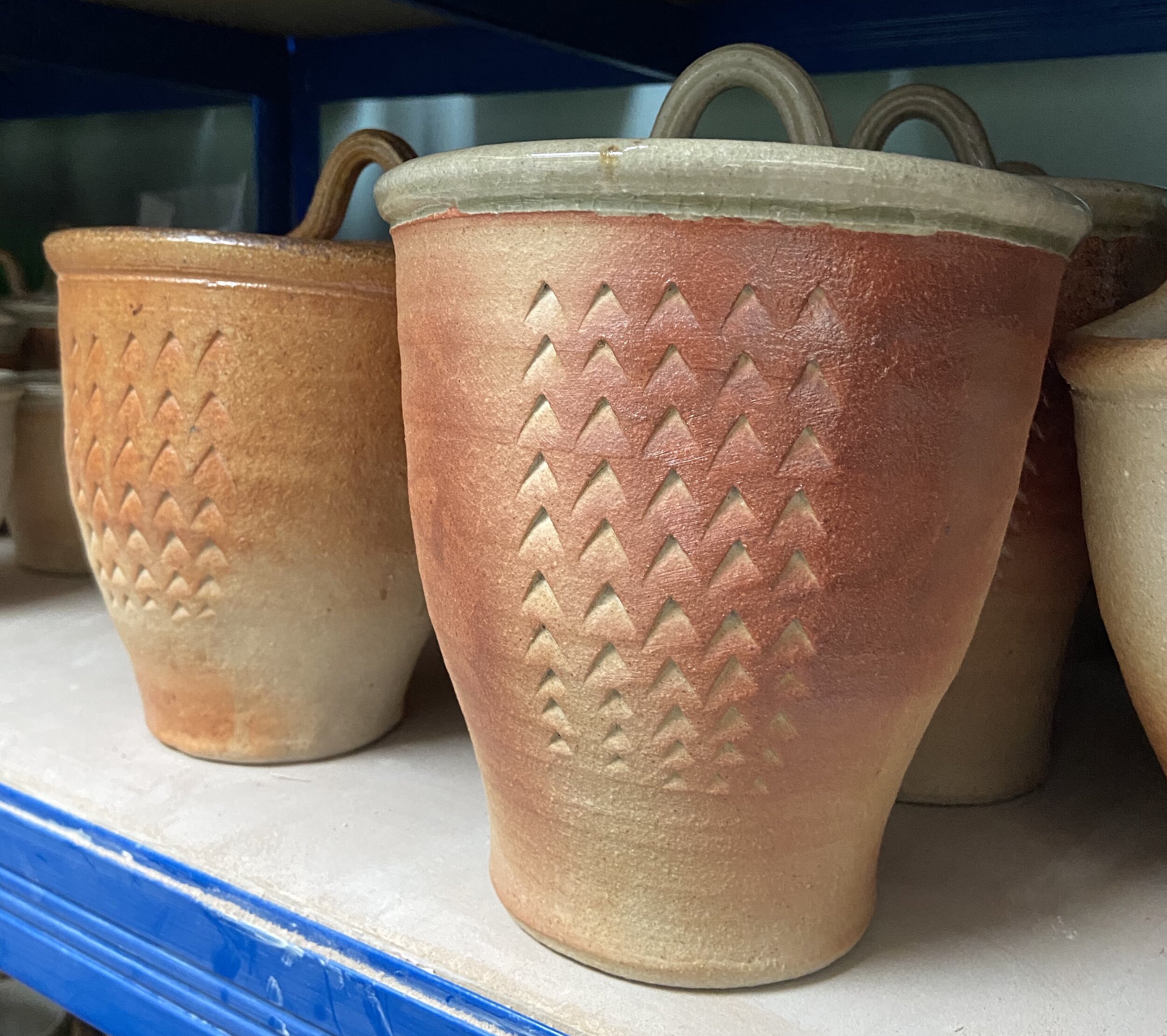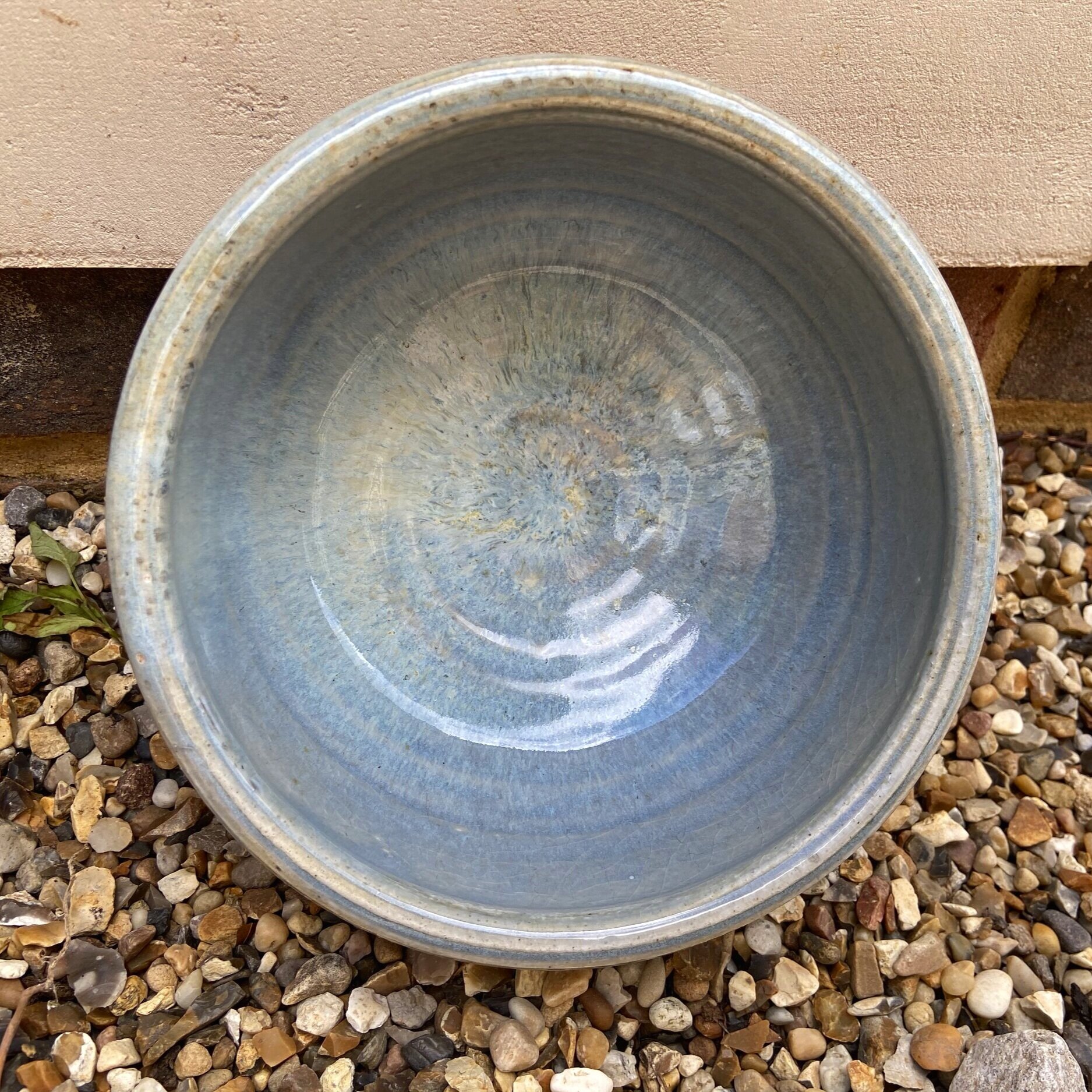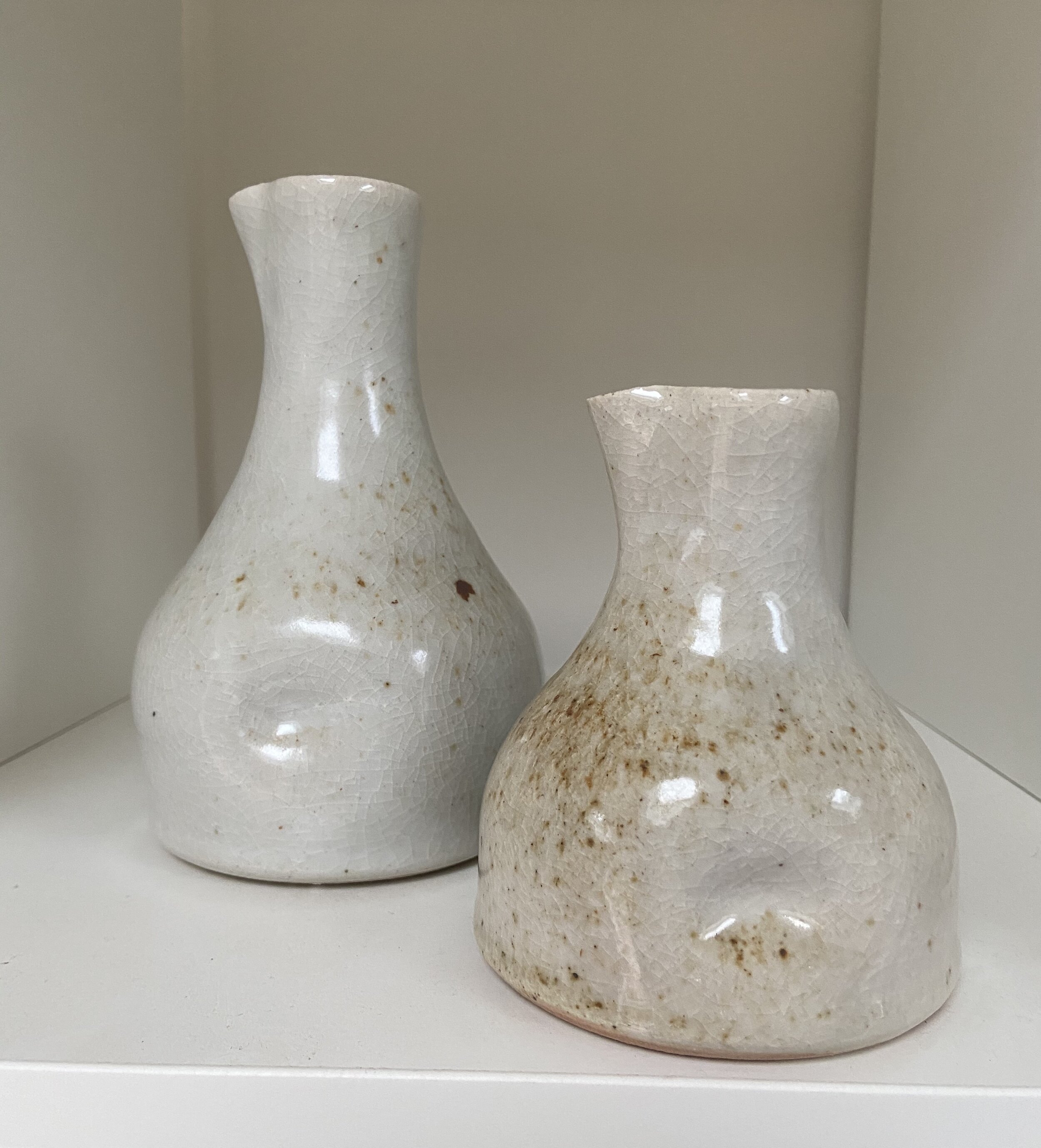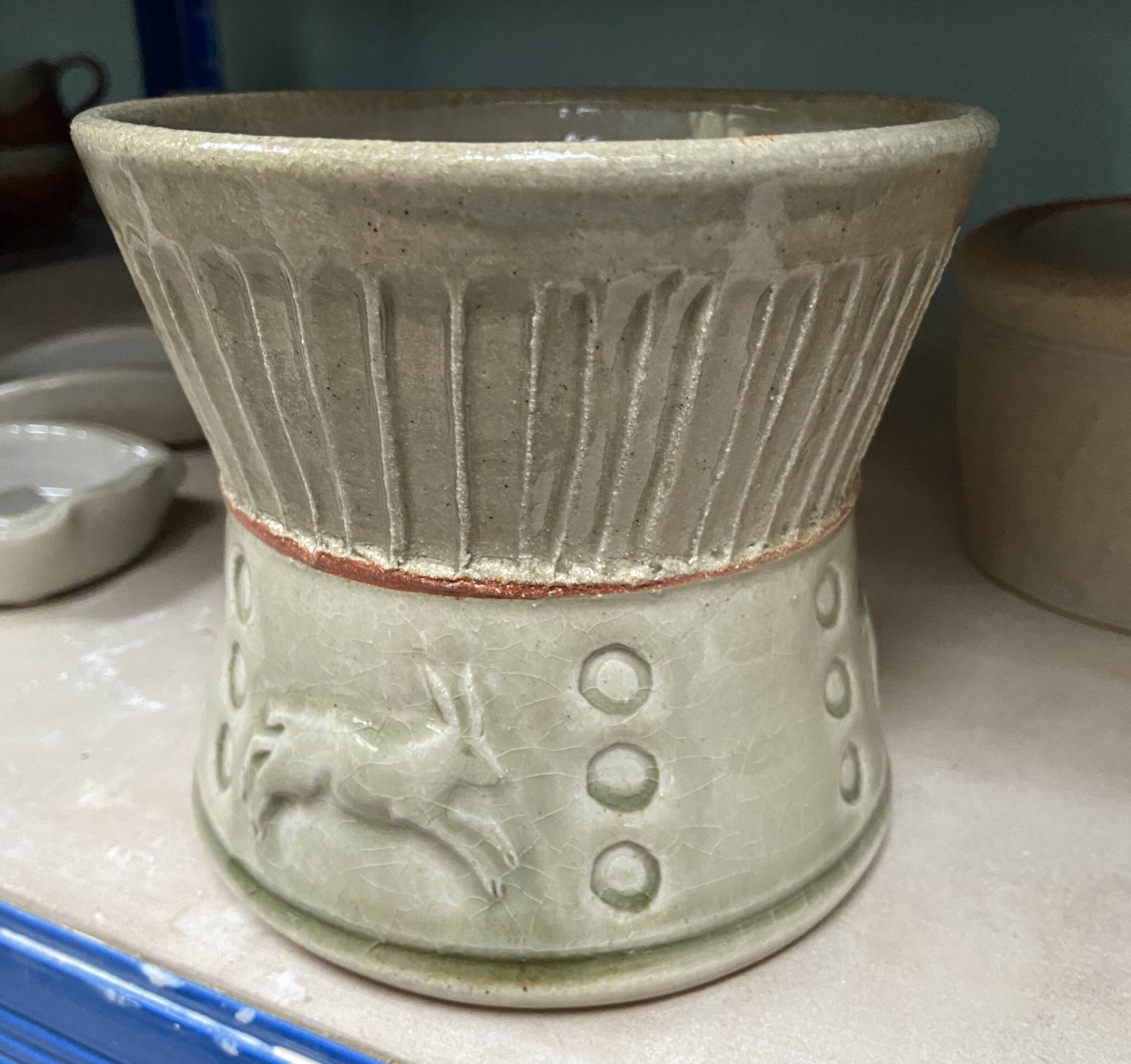Here are some video clips taken during the third firing of my kiln on 8th and 9th June 2020. I shared these to Instagram during the firing and people enjoyed following them, so I hope that visitors to my website will also be interested. The kiln holds around 250 pots so it takes me a some time to make enough to fill it. I am still learning how the kiln behaves and how my slips and glazes behave, so this is all a learning process for me as well as you!
The results from this firing.
You can learn a lot about the path that the flame took through the chamber by looking at the marks it leaves on the pots. I noticed that some shelves were ‘blocked’. They were so tightly packed around the edges that the flame didn’t get into the middle of the shelf leaving the body of some unglazed pots very grey. I deliberately packed tightly on the edge facing the mouth of the firebox to force the flame up to the top of the chamber, however the result was that the top of the chamber reached over 1300°c causing some glazes to melt and run too far, sticking some pots to their wads and the kiln shelf. Meanwhile the tight shelf of lemon squeezers at the very bottom, furthest from the fire mouth, only reached about 1270°c – my cone 10 in this position was only half over. I will try to redress this imbalance next time by firing looser around the edges and tighter in the middle of the pack.
See how the tops of the bottles below the very large bowl at the top have encouraged spots of flame blushing on the underside of the bowl. The pouring bottles shown in the picture carousel below illustrate how wood ash can land and melt into the glaze. And the fruit bowl with the blue rim 3 shelves down on the left has a beautiful Jun glaze inside.
